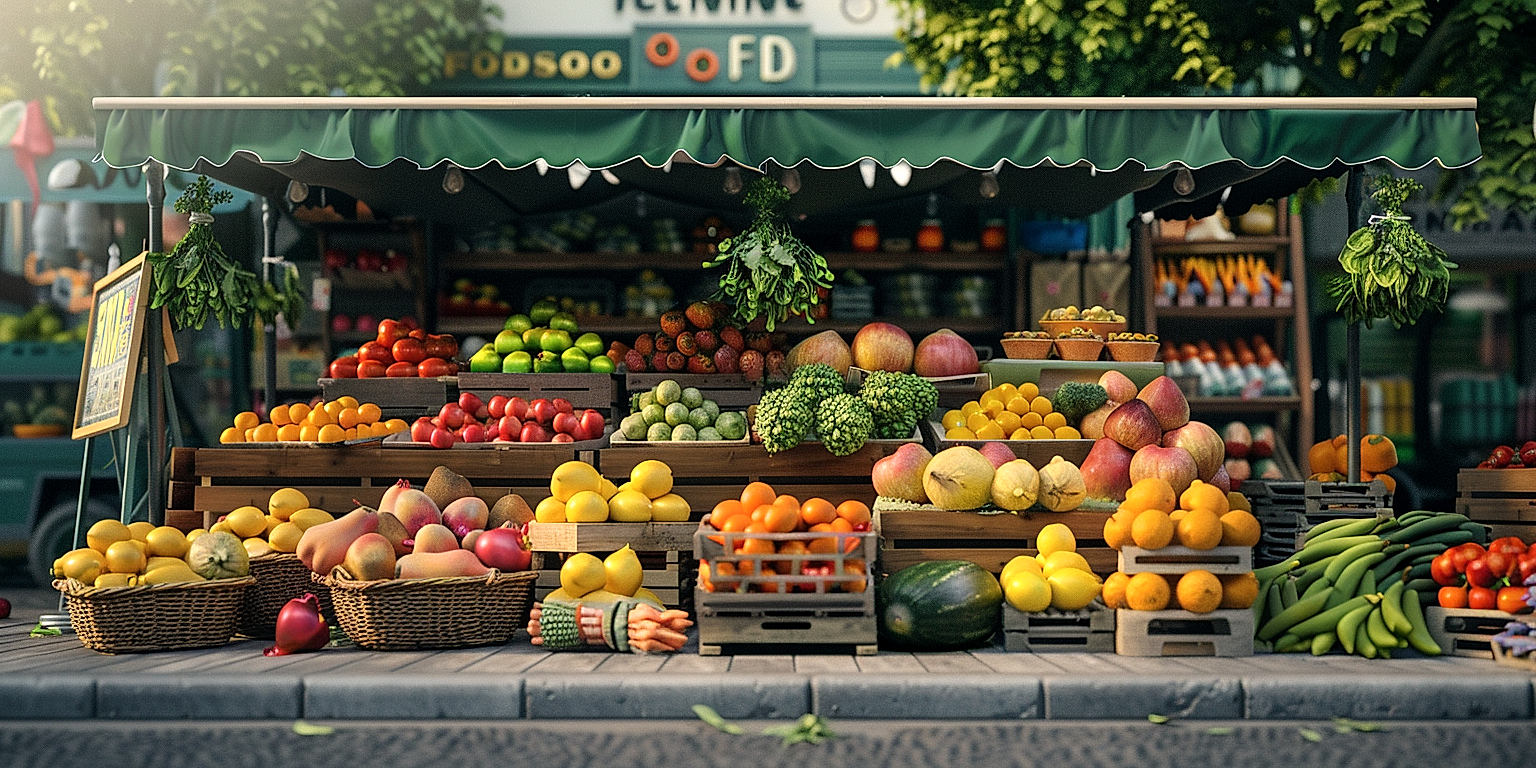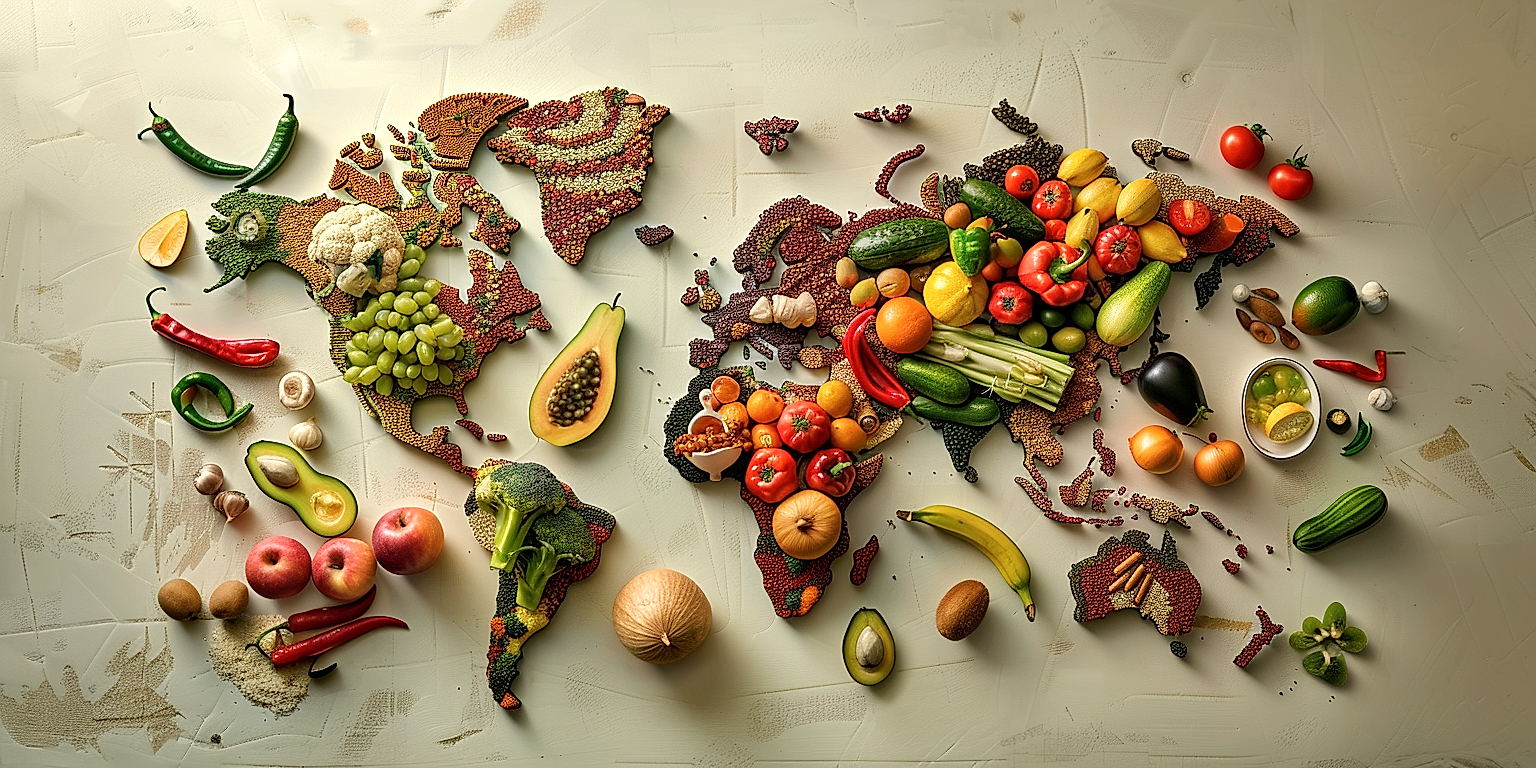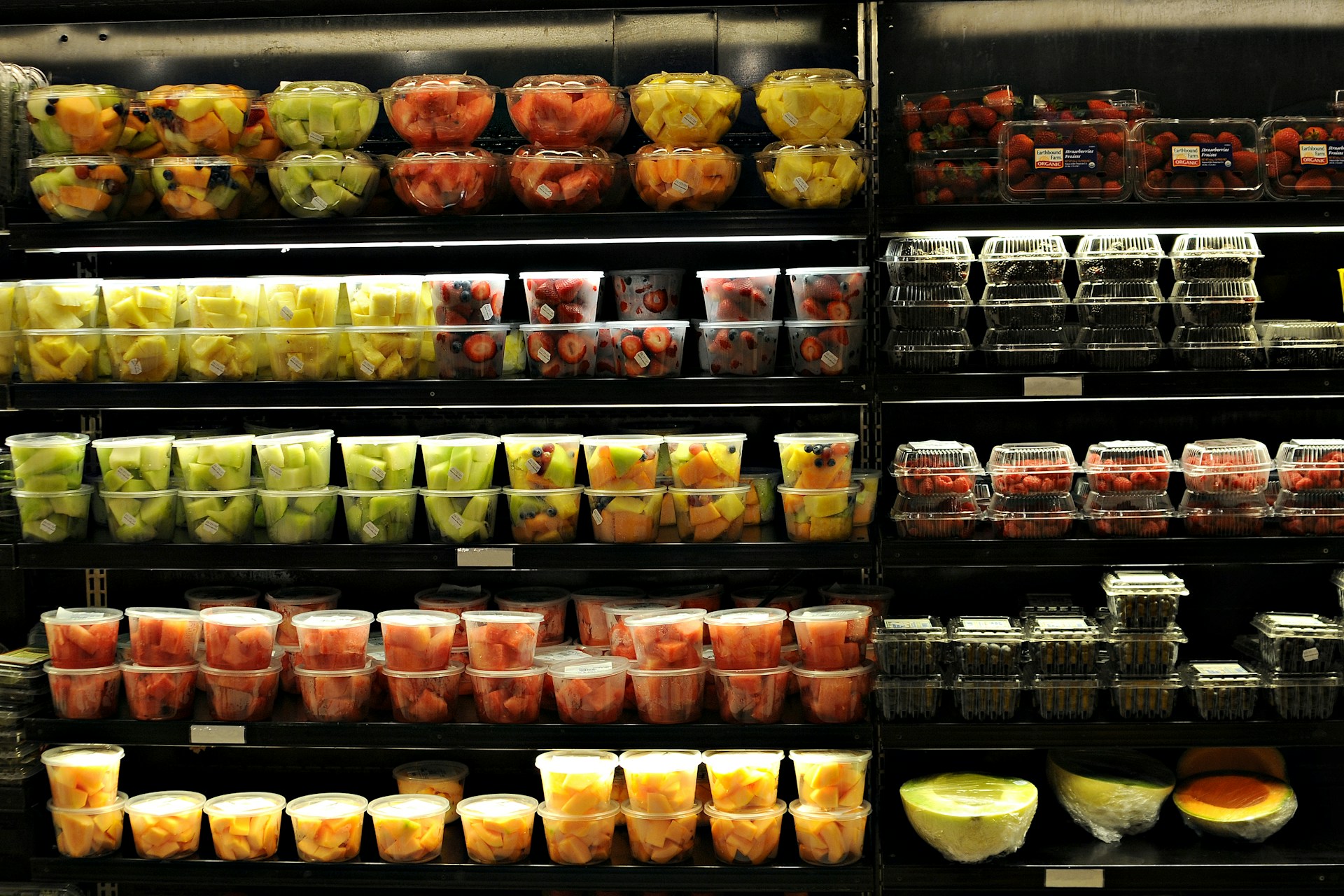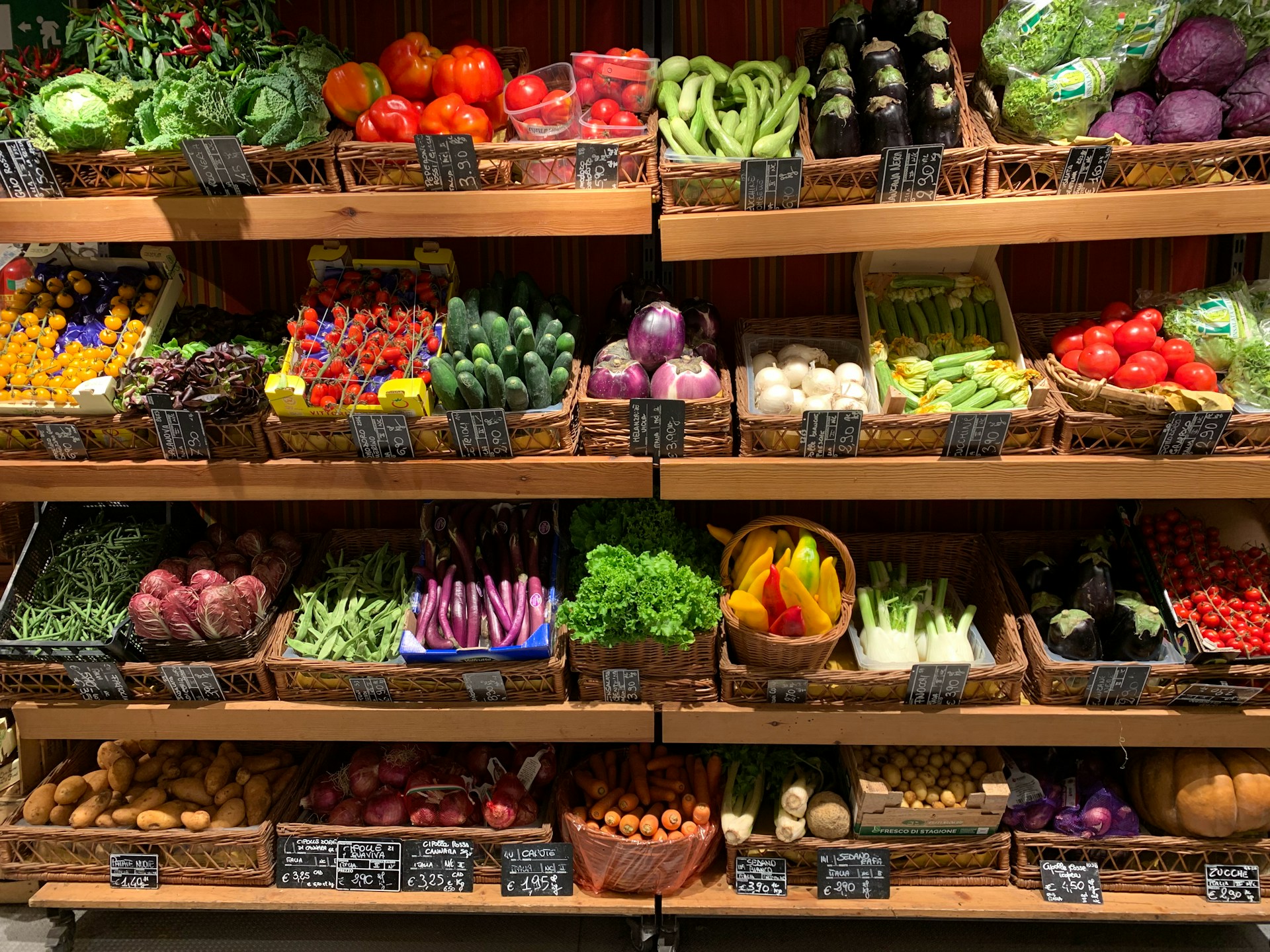The global food supply chain has seen significant transformations over the years.
The evolution in the industry isn’t solely due to advancements in processing technologies but is also a product of innovative distribution systems.
The realm of processed produce is often met with intricate challenges when it comes to product transportation and preservation.
Among various factors, the choice of distribution channels plays a crucial role in maintaining the quality of produce reaching consumers.
Through this lens, we delve into the intricacies of the distribution network for processed produce.
Unpacking these parameters will provide a comprehensive understanding of the critical role distribution channels play within the larger food industry framework.
Contents
Channels For Distributing Processed Produce
1. Wholesale Fruit and Vegetable Markets
Wholesale fruit and vegetable markets play a pivotal role in the distribution of processed produce.
These markets offer a vast variety of fresh and processed produce in bulk quantities, catering primarily to retailers, restaurants, and institutions.
The key function of these markets is to facilitate the exchange of goods from producers to buyers.
Wholesale markets provide an efficient mechanism for the distribution of processed produce, reaching thousands of retailers and even millions of customers indirectly.
This wide reach inherently implies that if your processed produce is accommodated in these markets, it is likely to be distributed far and wide.
The distribution process in these markets generally begins with farmers and food processors selling their products to large wholesalers.
These wholesalers, in turn, sell the produce to smaller retailers or directly to the end consumers.
One primary advantage of this channel is the speed and efficiency with which products can be dispersed to a large number of buyers.
Moreover, it allows producers to focus on production while leaving the distribution task to efficient middlemen.
However, it is important to note that there are certain challenges associated with wholesale markets, including the possibility of low profit margins due to the involvement of multiple intermediaries.
Moreover, there may be instances of low visibility or loss of control over the product once it enters the wholesale market chain.
Thus, while this channel offers enormous reach and efficiency, it is essential for producers to have systems in place to monitor their product’s journey from the wholesale market to the end customers.
Nonetheless, the importance of wholesale fruit and vegetable markets in the processed produce distribution chain is undeniable.
With the right strategies and partnerships, these markets can significantly boost the distribution and consequently, the sales of processed produce.
Overall, wholesale markets present a viable and often beneficial avenue for processed produce distribution, ensuring that these products reach the widest possible consumer base.
Despite the challenges, the benefits offered by this channel often outweigh the drawbacks, making wholesale markets a crucial part of the processed produce distribution network.
2. Direct-to-Consumer Farm Stands
The direct-to-consumer farm stands present a unique yet traditional channel for distributing processed produce.
It is a channel that puts a strong emphasis on freshness, authenticity, and direct interactions between the farmer and the consumer.
Many consumers appreciate procuring their processed produce from farm stands because it allows them to establish a personal and direct relationship with the food producer.
This method of food distribution provides an avenue for immediate feedback between the consumer and farmer, promoting product quality and improvement.
Furthermore, this distribution channel reduces the number of intermediaries, which may lead to fewer costs for both the farmer and consumer.
This can result in lower prices for consumers, and higher profit margins for farmers, therefore presenting a win-win situation for everyone involved.
Direct-to-consumer farm stands also offer an opportunity for consumers to witness the source of their food, enhancing trust in the food process.
Moreover, it provides an excellent platform for farmers to showcase and sell their processed food items directly without the need for middlemen.
Farmers have the ability to set their own prices for their produce, promoting fair trade and sustainable economic practices.
As consumers increasingly value the transparency and quality assurance of food production processes, farm stands have found their niche in the processed food distribution channels.
Many farm stands have started offering online selling and delivery services, integrating traditional with modern retailing methods.
Even though the direct-to-consumer farm stands are smaller scale compared to supermarket chains or online grocery delivery platforms, they play a pivotal role in connecting farmers directly with consumers.
Generally, farm stands focus more on locally grown and processed products, contributing to local economic growth and sustainability.
Overall, direct-to-consumer farm stands present an engaging, trustworthy, and beneficial channel for distributing processed produce.
3. Online Grocery Delivery Platforms
Online grocery delivery platforms are digital marketplaces where consumers can buy a variety of food items, including processed produce, and have them delivered straight to their doorstep.
They have not only made grocery shopping more convenient for consumers, but also provided significant opportunities for producers to distribute their processed products on a large scale.
These digital platforms take the shopping experience to a whole new level facilitating access to a wide range of products that traditional brick-and-mortar stores may not have the space to stock.
Online grocery platforms allow processed produce manufacturers to overcome traditional geographical obstacles and reach a much wider customer base.
Whether consumers are looking for organic vegetables, exotic fruits, or locally sourced food products, they can find them all on online grocery delivery platforms.
Moreover, online grocery platforms provide valuable data and insights about customer preferences, purchasing habits, and buying patterns that can help manufacturers tailor their product offerings.
With these insights, manufacturers can optimize their product assortment, adjust prices, run promotions, and make other decisions to increase their sales and profitability.
Online platforms also allow processed produce manufacturers to showcase their products in a more appealing way, with high-quality images and detailed product descriptions.
This not only helps consumers make informed buying decisions but can also significantly enhance a product’s visibility and appeal.
Additionally, these platforms offer various tools for retailers and suppliers to manage their inventory and orders, reducing administrative tasks and enabling them to focus more on their product and customer satisfaction.
One of the main advantages of online grocery platforms is that they facilitate direct communication between consumers and producers.
Through reviews and ratings, manufacturers can get instant feedback on their products, which can prove invaluable in improving their product quality and meeting consumers’ expectations.
Not only this, consumers can directly engage with the brands, get to know their story, their commitment to quality, and their environmental values, something that is becoming increasingly important to today’s conscious buyers.
The revolution spurred by these digital platforms has made online grocery shopping not only a popular choice for many consumers but also a critical channel for distributing processed produce.
4. Traditional Supermarket Chains
Traditional supermarket chains play a vital role in the distribution of processed produce.
These established retailers stock a wide array of processed fruits and vegetables, often in the form of canned goods, frozen items, and even dried or dehydrated products.
The strategic value of supermarket chains lies in their wide network of locations, making them accessible to a large number of consumers.
Therefore, traditional supermarket chains are a primary avenue for distributing processed produce, reaching millions of consumers daily.
Majority of people do their weekly grocery shopping in physical supermarkets, which is why these venues are essential for processed produce distribution.
Products in these supermarkets are displayed on highly strategic locations like end caps, shelves at eye level, or near the checkout deposits, to increase public exposure and buyer temptation.
Supermarkets employ shelf allocation strategies to maximize the visibility of certain products, including processed fruits and vegetables.
They also run regular promotions and sales to encourage higher purchasing volumes of these goods.
In addition, supermarkets often work closely with suppliers to ensure consistent product availability and quality.
This reliable supply chain is critical to maintaining customer trust and loyalty, which in turn drives repeat purchases of processed produce.
The level of control supermarkets exert over their inventory management also ensures that the quality and safety of processed produce are not compromised.
Furthermore, supermarkets often target a broad demographic, making them a suitable distribution channel for a wide variety of processed produce.
Many supermarket chains are now employing technological innovations to enhance their distribution and sales.
For example, online shopping portals and home delivery services have helped traditional supermarkets reach more consumers, increasing the distribution of processed produce.
Overall, the scale, accessibility, and operational capacity of traditional supermarket chains make them an extremely effective channel for distributing processed produce to consumers across the globe.
5. Specialty Health Food Stores
When considering channels used for distributing processed produce, specialty health food stores play a highly significant role.
For diverse consumer bases who value organic, vegan, gluten-free, or otherwise uniquely prepared processed foods, these stores are often the primary shopping destination.
Compared to traditional supermarket chains, specialty health food stores often provide a more curated selection of processed produce products.
There is a growing trend among consumers, especially health-conscious ones, to opt for foods free from artificial preservatives and chemicals, and these stores cater exactly to this need.
In these health-centric stores, processed produce encompasses a broad range of items, from canned organic fruits and vegetables to gluten-free pasta and grain products.
In addition to lined shelves, some of these stores also feature refrigeration and freezer units that hold processed produce items like frozen fruits and vegetables, vegan-friendly meat substitutes, and ready-to-cook meal kits.
They may also host sections featuring deli and bakery items made with processed produce, further catering to their customer’s needs.
These stores make it easier for consumers to find high-quality processed produce by categorizing them according to diets such as vegan, paleo, and low-carb among others.
By doing so, they not only make shopping more informative and easier but they also aid in moving the products off the shelves faster.
Moreover, due to their focus on health foods, these stores often have knowledgeable staff which aids consumers in making informed decisions about their purchases.
These staff members are often well versed in the nuances of various health-centered diets, the benefits of different types of produce, and even cooking methods for these items.
Often, specialty health food stores will use direct contracts with local or regional farmers and producers to ensure the quality of their produce.
This also enables them to control the distribution and guarantees them a steady supply of uniquely processed produce.
Due to the global prevalence of the internet, the reach of these stores is no longer limited to their geographical location.
Today, most specialty stores have online shopping platforms which enable them to distribute their processed produce to a wider audience.
From home delivery to click-and-collect options, these online platforms bridge the gap between health-conscious consumers and quality processed produce.
The Bottom Line
The rise in conscious consumerism has certainly influenced the diverse avenues through which people can access fresh fruits and vegetables.
From wholesale markets that provide vast options in bulk, farm stands that directly connect the farmer and the customer, to online platforms that deliver groceries right at your doorstep.
Yet, despite the modernity and convenience brought by digital innovation, traditional supermarkets continue to serve as mainstay provisions for most households.
On the other hand, specialty health food stores cater to the niche market who are particularly keen on organic, natural, and gluten-free etc.
product offerings.
Evidently, people’s preferences and needs shape the landscape of fruit and vegetable retail outlets.




